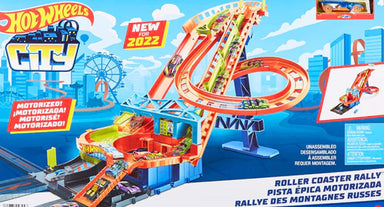LEGO toys are one of the products loved by both adults and children because of their safety, high thinking and creativity. Lego toys include details that can be assembled together to form many diverse objects, helping children easily think and be creative to assemble shapes as desired.
LEGO toys are produced by the LEGO company from Denmark. This is one of the leading children's toy companies in the world with an admirable history. However, the company that produces LEGO had to go through many difficulties, even going bankrupt several times before achieving its current success. Join us in looking back at the history and development of the LEGO company.
The story is about a wood factory that caught fire
The story of LEGO began in a Danish wood workshop in the 1910s. At that time, Ole Kirk Christiansen (1891 - 1958) was just an ordinary carpenter with many ambitions. When he was young, Christiansen had a hobby of chiseling and carving wood, so he decided to open a carpentry workshop in 1916.
At first, Christiansen's factory specialized in producing furniture such as tables, chairs... and the business was quite prosperous. In 1924, when he was looking for a way to develop his business, there was an unfortunate incident that caused the Christiansen family's workshop to instantly turn to ashes.

LEGO founder and his 2 sons
Not giving up after the heavy losses from the fire, Christiansen tried to rebuild a new, even larger factory. Tragedy struck again because in 1929, the US stock market collapsed, causing the world to fall into crisis. Denmark was also caught up in the Great Depression and Christiansen's business almost stagnated.
The beginning of LEGO
That time. Due to not having enough money to pay wages, Christiansen was forced to lay off most of the workers in the wood workshop. He struggled to make a living to support himself and his family. The Christiansen family's carpentry workshop has no machines, everything is done by hand, so productivity is very low, unable to compete with other production facilities. Pushed to the limit, he devised a way to use wood to create cheap, salable goods, including children's toys. Because toys are made very quickly and are easy to sell because they are cheap.
Just a few months later, Christiansen launched a series of products such as cars, planes, boats and some animals such as dogs, horses, sheep..., made from birch wood, and covered with layers of colorful paint. colorful, eye-catching. His best-selling toy is a wooden duck whose beak opens and closes when the player pulls the string.

The best-selling toy duck at that time
In 1934, Christiansen transformed the workshop into a company called LEGO, which is an abbreviation of the Danish words "Leg godt", meaning "play well". By 1935, LEGO had a total of 42 different types of wooden toys, all of which had patented designs. Instead of working by hand as before, workers have started using planers, drills, saws, and lathes to make toys.
Once again, the wood factory burned down
In 1942, when the Nazis occupied Denmark, Christiansen's wood factory was once again burned down by the war. After World War II ended, although the capital was still enough for him to rebuild, the raw material source of birch wood was not much left. Some other toy manufacturers have begun to switch to using plastic materials. Plastic toys are an inevitable trend, but what toys must be made and meet the elements of novelty and low price is the problem.
In 1946, Christiansen purchased his first plastic injection molding machines. He also created a new toy - colorful rectangular plastic "bricks" that can be assembled together with small round pieces located on one side of the brick. Christiansen calls them Automatic Binding Bricks. With designs according to each theme, LEGO quickly became the best-selling toy in Europe and America in 1951. With a LEGO set, people can build an entire city with houses and vehicles. , people, trees, rivers, lakes...
It's essential to LEGO's current success
The company's sales only increased sharply around Christmas, making Godfred feel that LEGO toys were missing something essential. He realized that children develop very quickly, so ready-made toys are not challenging enough. Toys should stimulate children to use their imagination and creativity.

LEGO toys continue to grow thanks to his vision
Instead of providing ready-made toys for children, LEGO offers an opportunity for children to realize objects through LEGO sets. This "secret" has brought a breakthrough in LEGO's business. After that, the company continued to improve the product because constructions could not yet stick together, with just the slightest touch, a massive castle could become ruins in an instant. Gottfried took it upon himself to solve this problem and in 1958, he patented the iconic LEGO brick with inner tubes that made the bricks stick together. The LEGO toy system became very successful and the company began to expand into other countries.
LEGO Group products are produced using modern production lines. LEGO applies computer technology with almost absolute precision so that the pieces can be assembled together perfectly. "If it weren't for the fires, we probably wouldn't have had the motivation to make LEGO like we do now," Christianen's eldest son, Johannes, shared.




